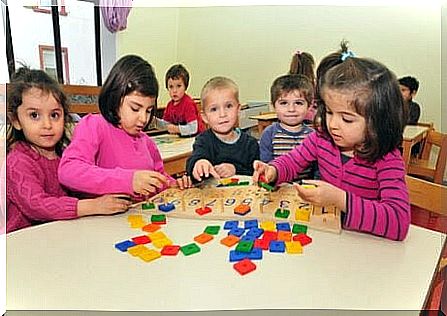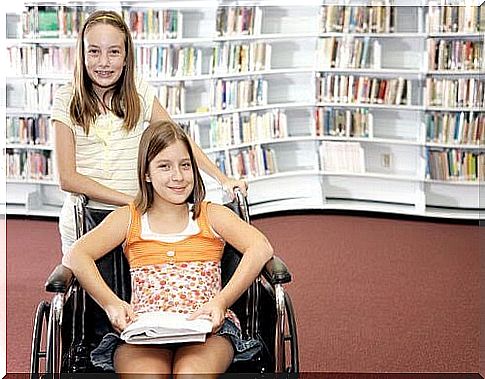What Is An Inclusive School?

An inclusive school is not about getting children to fit into a certain system or structure in society. In fact, the opposite is true: an inclusive school wants to transform the education system so that children from different cultures, backgrounds and with different abilities can all fit in and develop.
An inclusive school is part of a process that aims to improve the overall education system so that it can benefit all children. To meet this, education centers and schools must become places that can take care of all students.
What is an inclusive school?
For an inclusive school to exist, one must provide study opportunities to all children without any distinction or exception. Especially for those who belong to an ethnic minority group, live in rural areas or have a disability or some learning disability, due to which they have a tendency to be excluded.
The idea is that everyone, without exception, should be able to acquire knowledge and develop their skills. In addition, we strive to create habits that contribute to all children’s mental and social well-being.
In other words, an inclusive school offers special education in education centers or regular schools. In order for this to be possible and give the expected results, the department must be systematically organized and receive financial support in order to make all premises accessible to all.

Criteria for a school with inclusive education
An educational institution must work to continuously eliminate all obstacles that prevent participation and learning. This applies not only to children but also for families to be able to actively participate in school and their child’s learning.
A school with inclusive education must meet the following criteria:
- Focus on children’s abilities.
- No requirements or any selection process for a child to start.
- Work to improve the quality of life for children and families.
- Work closely with families, based on respect and empathy.
- Have teachers who give students support in their learning.
- Let children make their own voices heard and accept criticism and consider suggestions.
- Respect is a cornerstone of their teaching and learning.
- The education system must be characterized by being comprehensive, interdisciplinary and critical.
- Even if you evaluate the students in a general way, you consider the capacity of each one individually.
Strategies to include excluded children
UNESCO has created different strategies and guidelines for the three groups of children who all too often fall victim to social exclusion. The following strategies have been presented to strive for the maximum development and potential of these children.
Street children
Education is the only completely effective way to socially reintegrate street children. Although it may feel like there are no street children in Sweden, the number has started to rise in recent years, so it is no longer just a problem in developing countries.
Activities in an inclusive school can be characterized as follows:
- Increases awareness of the conditions for street children and their right to education like everyone else.
- Provides technical support to institutions or organizations that involuntarily meet the basic needs of street children.
- Strengthens initiatives with financial support to ensure that public and private sector services are continuous and efficient.
Working children
Child labor is illegal in Sweden, but it is still a major problem in many developing countries. These children cannot go to school because they have to work and contribute to the livelihood. Education is therefore an important tool for preventing child labor.
Children with disabilities
Many children who have a functional variation or learning difficulties are never sent to school because their parents do not consider it necessary. But it is a serious mistake: early education is very important for all children. In these cases, an inclusive school tries to offer the best resources by providing:
- Necessary support for all students who have special educational needs to integrate them as well as possible.
- Professional staff trained in teaching children with disabilities or learning disabilities.
At the same time, children from indigenous peoples in schools are still discriminated against. This is another group of children that must be taken into account for this type of education.
Finally, an inclusive school aims to make knowledge and education accessible to all and not leave anyone out because they are socially different or have a disability.









